This is the Medicine Den! Come here if your injured, need an estimate, or you're sick. Please do not pretend you know anything about herbs unless you are the medicine cat.
Juniper Berries
Description: Purple-blue berries from the dark green, spiky-leaved juniper bush.
Location: Grows in places that are not wet.
Usage: Chewed and eaten.
Effect: Soothes bellyaches, gives strength, and helps troubled breathing. It is also used to help calm cats.
Lamb's Ear
Description: Soft, fuzzy green plant.
Location: Commonly found in the mountains
Effect: Gives a cat strength.
Lavender
Description: A small, purple, flowering plant.
Effect: Cures fever and chills. Also a herb used to hide the scent of death.
Mallow Leaves
Description: Large fuzzy three-nubbed leaves from a flowering shrub, sweet rose scent.
Location: Grows best near shore, but best collected at sunhigh, when they are dry.
Usage: Eaten.
Effect: Soothes bellyache.
Marigold
Description: A low-growing flower, yellow to bright orange.
Location: Near water.
Usage: Petals or leaves chewed in a poultice. Juice can be used as well.
Effect: Stops infection. Stops bleeding. Used for inflammation of stiff joints.
Mint
Usage: Rubbed on a dead body.
Effect: Hides the scent of death.
Mouse Bile
Extracted from the mouse. The only remedy for ticks, mouse bile is foul smelling, and is stored in moss. When dabbed on a tick, the tick falls off. Smell can be masked by wild garlic, or by washing paws in running water. If accidentally swallowed, can leave a horrible taste in mouth for days. Medicine cats always have to remember to wash their paws in a body of water, such as a creek or stream, after using mouse bile.
Dried Oak Leaf
Description: Round, cartoony ruffled leaves.
Location: All over the forest floor and collected in leaf-fall.
Usage: Unknown, but stored in a dry place.
Effect: Stops infection from setting in.
Parsley
Description: A long-stemmed plant with ragged-edged crinkly leaves, Sharp scent, tastes cold and fresh, tastes the same fresh or dried.
Location: grows best in moist, well drained soil, with full sun.
Usage: Eaten
Effect: Stops a queen from producing milk if her kits die, don't need milk anymore, or are producing too much milk.Also used to cure bellyache.
Poppy Seeds
Description: Tiny, round black seeds that are shaken out of a dried poppy flowerhead.
Location: All over forest
Usage: Chewed on.
Effect: They can help a cat sleep, soothes shock or distress, or ease pain. Not recommended for nursing queens.
Ragwort Leaves
Description: Tall shrub with yellow flowers, Tastes foul to cats.
Location: Unknown.
Usage: Crushed and chewed; mixed with juniper berries, it can help aching joints
Effect: Treats aching joints and keeps a cat's strength up.
Ragweed
Description: Ragged-leaved plant resembling a fern.
Location: Thought to be commonly found in the mountains.
Usage: Thought to give cats extra strength.
Effect: Like lamb's ear, ragweed gives a cat extra strength and energy.
Raspberry Leaves
Description: Soft to the touch, but with jagged edges
Location: In the forest, it grew near the catmint.
Usage: It could be a painkiller, or help stop bleeding during kitting.
Effect: Could possibly ease pain, or stop bleeding.
Rosemary
Description: Tall with needle-like leaves and purple flowers.
Location: Near the warriors den.
Usage: Put on the pelt of a dead cat to prepare for burial.
Effect: Hides the scent of death.
Rush
Description: It has long narrow leaves and lavender-colored head stalks.
Location: Often grows in infertile soils in a wide range of moisture conditions.
Usage: Used to bind broken bones
Effect: Helps hold a broken limb in place, such as casts for Twolegs.
Snakeroot
Description: The best remedy for poison, especially snake bites.
Location: Grows mainly in warmer areas, however some grow in cooler areas.
Usage: Thought to be applied to wounds.
Effect: Thought to heal poison.
Sorrel
Description: Similar to dock, Sorrel is used as a traveling herb.
Location: Can be found near Twoleg nests
Usage: Eaten.
Effect: Traveling herb.
Stinging Nettle
Description: It has green, spiny seeds.
Location: All over the forest.
Usage: The seeds are eaten by a cat who's swallowed poison, or the leaves are chewed into a poultice for a wound.
Effect: Induces vomiting, or brings down swelling, respectively. Can be mixed with comfrey to help heal broken bones. Helps with wounds.
Tansy
Description: The tansy plant has round, yellow leaves, and has a very sweet and strong scent, making it good for disguising a cat's scent.
Location: Found in the forest and near Twoleg places.
Usage: To be consumed, but only in small doses.
Effect: Cures coughs. Can be used to cure wounds and poisons. Stops cats from getting greencough. Soothes throats.
Tormentil
Description: It has a strong, aromatic scent to it and a sharp taste.
Location: Found in most cool or cold areas, but other types may be found in gardens.
Usage: Chewed and put on the wound.
Effect: Its root is good for treating all wounds and extracting poison.
Thyme
Description: Small, delicate, thick, sticky leaves with a fresh tang.
Location: Best in hot, sunny location.
Usage: Leaves can be chewed on.
Effect: Calms nervousness, anxiety, and cats who are in shock.
Traveling Herbs
Traveling Herbs consists of sorrel, daisy, chamomile and burnet. Used to give a cat more energy and strength.
Watermint
Description: A green, leafy plant.
Location: Usually found in streams or damp earth.
Usage: It is usually chewed into a pulp, and then eaten.
Effect: Eases the suffering that originates from a bellyache.
Wild Garlic
Description: Due to its strong smell, it is good for hiding the scent of a certain Clan, and disguising cats on raids.
Location: Near the forest entrance
Usage: One must roll in it.
Effect: Prevents infection, especially rat bites
Willow Bark
Description: Bark of the willow tree.
Location: Grows near Twoleg places.
Usage: Unknown.
Effect: Eases pain.
Wintergreen
Description: Easily identifiable by its red berries.
Effect: Treats wounds and some poisons.
Yarrow
Description: A flowering plant.
Location: Near Adderrocks
Usage: Its leaves are chewed into a poultice that can be given to cats or applied to a wound depending on the situation.
Effect: Extracts poison from wounds. Will make a cat vomit up toxins.The ointment will soften and help heal cracked pads.
POISONS
Deathberries
Description: Red berries from the dark-leaved, poisonous yew bush.
Location: Ravines
Usage: Sometimes used to kill other cats by making them eat the berry.
Effect: Kills a cat within minutes when consumed.
Foxglove Seeds
Description: Tiny, black seeds from the bell-shaped flower of the foxglove plant.
Usage: They are used to treat the heart
Effect: They can easily cause paralysis and heart failure
Holly Berries
Description: Plant with spiny leaves that produces red berries with no medicinal value.
Location: Forests.
Nightshade
Description: Tubular flower with radiating petals
Usage: To kill a cat who cannot be saved quickly.
Effect: Poisonous
Water Hemlock
Description: Green or white flowers with petals in umbrella-shaped clusters
Location: Unknown
Usage: Unknown
Effect: Causes writhing and foaming at the mouth.
Description: Purple-blue berries from the dark green, spiky-leaved juniper bush.
Location: Grows in places that are not wet.
Usage: Chewed and eaten.
Effect: Soothes bellyaches, gives strength, and helps troubled breathing. It is also used to help calm cats.
Lamb's Ear
Description: Soft, fuzzy green plant.
Location: Commonly found in the mountains
Effect: Gives a cat strength.
Lavender
Description: A small, purple, flowering plant.
Effect: Cures fever and chills. Also a herb used to hide the scent of death.
Mallow Leaves
Description: Large fuzzy three-nubbed leaves from a flowering shrub, sweet rose scent.
Location: Grows best near shore, but best collected at sunhigh, when they are dry.
Usage: Eaten.
Effect: Soothes bellyache.
Marigold
Description: A low-growing flower, yellow to bright orange.
Location: Near water.
Usage: Petals or leaves chewed in a poultice. Juice can be used as well.
Effect: Stops infection. Stops bleeding. Used for inflammation of stiff joints.
Mint
Usage: Rubbed on a dead body.
Effect: Hides the scent of death.
Mouse Bile
Extracted from the mouse. The only remedy for ticks, mouse bile is foul smelling, and is stored in moss. When dabbed on a tick, the tick falls off. Smell can be masked by wild garlic, or by washing paws in running water. If accidentally swallowed, can leave a horrible taste in mouth for days. Medicine cats always have to remember to wash their paws in a body of water, such as a creek or stream, after using mouse bile.
Dried Oak Leaf
Description: Round, cartoony ruffled leaves.
Location: All over the forest floor and collected in leaf-fall.
Usage: Unknown, but stored in a dry place.
Effect: Stops infection from setting in.
Parsley
Description: A long-stemmed plant with ragged-edged crinkly leaves, Sharp scent, tastes cold and fresh, tastes the same fresh or dried.
Location: grows best in moist, well drained soil, with full sun.
Usage: Eaten
Effect: Stops a queen from producing milk if her kits die, don't need milk anymore, or are producing too much milk.Also used to cure bellyache.
Poppy Seeds
Description: Tiny, round black seeds that are shaken out of a dried poppy flowerhead.
Location: All over forest
Usage: Chewed on.
Effect: They can help a cat sleep, soothes shock or distress, or ease pain. Not recommended for nursing queens.
Ragwort Leaves
Description: Tall shrub with yellow flowers, Tastes foul to cats.
Location: Unknown.
Usage: Crushed and chewed; mixed with juniper berries, it can help aching joints
Effect: Treats aching joints and keeps a cat's strength up.
Ragweed
Description: Ragged-leaved plant resembling a fern.
Location: Thought to be commonly found in the mountains.
Usage: Thought to give cats extra strength.
Effect: Like lamb's ear, ragweed gives a cat extra strength and energy.
Raspberry Leaves
Description: Soft to the touch, but with jagged edges
Location: In the forest, it grew near the catmint.
Usage: It could be a painkiller, or help stop bleeding during kitting.
Effect: Could possibly ease pain, or stop bleeding.
Rosemary
Description: Tall with needle-like leaves and purple flowers.
Location: Near the warriors den.
Usage: Put on the pelt of a dead cat to prepare for burial.
Effect: Hides the scent of death.
Rush
Description: It has long narrow leaves and lavender-colored head stalks.
Location: Often grows in infertile soils in a wide range of moisture conditions.
Usage: Used to bind broken bones
Effect: Helps hold a broken limb in place, such as casts for Twolegs.
Snakeroot
Description: The best remedy for poison, especially snake bites.
Location: Grows mainly in warmer areas, however some grow in cooler areas.
Usage: Thought to be applied to wounds.
Effect: Thought to heal poison.
Sorrel
Description: Similar to dock, Sorrel is used as a traveling herb.
Location: Can be found near Twoleg nests
Usage: Eaten.
Effect: Traveling herb.
Stinging Nettle
Description: It has green, spiny seeds.
Location: All over the forest.
Usage: The seeds are eaten by a cat who's swallowed poison, or the leaves are chewed into a poultice for a wound.
Effect: Induces vomiting, or brings down swelling, respectively. Can be mixed with comfrey to help heal broken bones. Helps with wounds.
Tansy
Description: The tansy plant has round, yellow leaves, and has a very sweet and strong scent, making it good for disguising a cat's scent.
Location: Found in the forest and near Twoleg places.
Usage: To be consumed, but only in small doses.
Effect: Cures coughs. Can be used to cure wounds and poisons. Stops cats from getting greencough. Soothes throats.
Tormentil
Description: It has a strong, aromatic scent to it and a sharp taste.
Location: Found in most cool or cold areas, but other types may be found in gardens.
Usage: Chewed and put on the wound.
Effect: Its root is good for treating all wounds and extracting poison.
Thyme
Description: Small, delicate, thick, sticky leaves with a fresh tang.
Location: Best in hot, sunny location.
Usage: Leaves can be chewed on.
Effect: Calms nervousness, anxiety, and cats who are in shock.
Traveling Herbs
Traveling Herbs consists of sorrel, daisy, chamomile and burnet. Used to give a cat more energy and strength.
Watermint
Description: A green, leafy plant.
Location: Usually found in streams or damp earth.
Usage: It is usually chewed into a pulp, and then eaten.
Effect: Eases the suffering that originates from a bellyache.
Wild Garlic
Description: Due to its strong smell, it is good for hiding the scent of a certain Clan, and disguising cats on raids.
Location: Near the forest entrance
Usage: One must roll in it.
Effect: Prevents infection, especially rat bites
Willow Bark
Description: Bark of the willow tree.
Location: Grows near Twoleg places.
Usage: Unknown.
Effect: Eases pain.
Wintergreen
Description: Easily identifiable by its red berries.
Effect: Treats wounds and some poisons.
Yarrow
Description: A flowering plant.
Location: Near Adderrocks
Usage: Its leaves are chewed into a poultice that can be given to cats or applied to a wound depending on the situation.
Effect: Extracts poison from wounds. Will make a cat vomit up toxins.The ointment will soften and help heal cracked pads.
POISONS
Deathberries
Description: Red berries from the dark-leaved, poisonous yew bush.
Location: Ravines
Usage: Sometimes used to kill other cats by making them eat the berry.
Effect: Kills a cat within minutes when consumed.
Foxglove Seeds
Description: Tiny, black seeds from the bell-shaped flower of the foxglove plant.
Usage: They are used to treat the heart
Effect: They can easily cause paralysis and heart failure
Holly Berries
Description: Plant with spiny leaves that produces red berries with no medicinal value.
Location: Forests.
Nightshade
Description: Tubular flower with radiating petals
Usage: To kill a cat who cannot be saved quickly.
Effect: Poisonous
Water Hemlock
Description: Green or white flowers with petals in umbrella-shaped clusters
Location: Unknown
Usage: Unknown
Effect: Causes writhing and foaming at the mouth.
Alder Bark
Description: Bark of the alder tree.
Location: Grows mainly in boggy, wet terrain.
Effect: Eases toothaches.
Beech Leaves
Description: The distinguishing feature of the leaf is the serrated edges.
Usage: For carrying other herbs.
Blackberry Leaves
Description: Leaves from the prickly blackberry bush.
Location: Almost anywhere
Usage: These leaves are chewed into a pulp.
Effect: Eases the swelling of bee stings.
Borage Leaves
Description: Easily distinguished by its small blue or pink star-shaped flowers and hairy leaves.
Location: Grows best in forests.
Usage: Eaten
Effect: It produces more and better milk. It also brings down fevers.
Burdock Root
Description: Tall-stemmed thistle with a sharp smell and dark leaves.
Location: Dry areas
Usage: The root is dug up, the soil is washed off, and then it is chewed into a pulp.
Effect: Lessens and heals the pain of infected rat bites.
Burnet
Description: Has oval-shaped leaves with serrated edges. Stems have large clusters of small flower buds on top.
Location: Meadows
Usage: A traveling herb.
Effect: Keeps strength up
Catchweed
Description: A plant with fuzzy green balls on long stems.
Location: It is common in hedges and other low, shrubby vegetation.
Usage: The burrs are put on the pelt where poultices are.
Effect: Stops poultices from being rubbed off without hurting the skin.
Catmint
Description: A leafy and delicious-smelling plant.
Location: Rarely found in the wild; mostly found in Twoleg gardens.
Usage: Eaten.
Effect: Best remedy for the deadly greencough, which kits and elders usually catch in the season of leaf-bare. Can also be used for whitecough.
Celandine
Description: Yellow flower with four petals.
Usage: Juice is trickled into the eye.
Effect: Soothes damaged eyes.
Chamomile
Description: A small, white flower with a large, yellow center.
Location: Can be found in Twoleg gardens.
Usage: Eaten.
Effect: Strengthens the heart and soothes the mind. Also given to traveling cats for strength.
Chervil
Description: A sweet-smelling plant with large, leafy, fern-like leaves and small white flowers.
Location: Near Adderrocks
Usage: Chewed to extract the juice of the leaves or the root.
Effect: For infected wounds and bellyache, respectively, Can be used during kitting.
Chickweed
Description: Tall-stemmed plant with fat, almond-shaped leaves.
Location: Near sunny, dry rocks.
Effect: Treats greencough, though catmint is often preferred.
Cobwebs
Description: Long, thin, shiny strands spun into a web by spiders. Very common.
Location: All around the forest.
Usage: Press over wound.
Effect: To soak up and stop the bleeding. It may also be used to bind broken bones.
Coltsfoot
Description: A flowering plant with yellow or white flowers resembling dandelions. Grows best in newleaf.
Usage: Leaves chewed into a pulp.
Effect: Eases breathing or kitten-cough, as well as cracked or sore pads.
Comfrey Root
Description: It has large leaves, small bell-shaped flowers, which are pink, white, or purple, and fat, black roots. Tangy smell
Location: Damp, grassy places.
Usage: Roots are chewed into a poultice.
Effect: Repairs broken bones or soothes wounds. Also used for wrenched claws. Can be used for itching, used for inflammation on stiff joints.
Daisy Leaf
Description: Thick, dark green, oval shaped leaves.
Location: Almost everywhere.
Usage: Chewed into a paste.
Effect: Eases the pain of aching joints. It is also a travelling herb.
Dandelion
Description: Common yellow-flowered plant with long, hollow stems.
Location: Almost everywhere.
Usage: The white liquid is thought to be applied to bee stings, Leaves can be chewed.
Effect: Thought to soothe and heal bee stings. Its leaves can also be chewed to act like a painkiller.
Dock
Description: Common, large-leafed plant with a tangy smell and taste.
Location: Doesn't grow well in mountains, best in leafy areas.
Usage: Chewed up and applied to scratches. Similar to sorrel.
Effect: Soothes scratches,though can sting when being applied. Soothes sore pads.
Fennel
Description: Thin, spiky leaves.
Location: Found in numerous places, especially on dry soils near the sea-coast and on riverbanks.
Usage: Stalks are broken and juice is squeezed into the receiver's mouth.
Effect: Helps pain in the hips
Feverfew
Description: Small bush with flowers resembling daisies, sharp tangy smell, small soft leaves.
Location: Grows best along the water.
Usage: Eaten.
Effect: Reduces body temperature for cats with fever or chills. Also heals aches and pains, especially good for headaches.
Goldenrod
Description: A tall plant with bright, yellow flowers.
Location: Grows well on moors
Usage: Chewed into a poultice.
Effect: Good for healing wounds.
Heather Nectar
Description: Nectar found in bell-shaped flowers.
Location: Best grown in shady areas.
Usage: Included in herbal mixtures.
Effect: Makes swallowing easier and sweetens mixtures.
Honey
Description: A sweet, golden-coloured liquid made by bees.
Location: In honeycombs or bees nests up in trees.
Usage: Eaten, or given by moss soaked in it.
Effect: Soothes infections, smoke-damaged or sore throats, helps cats swallow other concoctions, helps soothe coughing, gives energy.
Horsetail
Description: A tall, bristly-stemmed plant, referred to with fleshy stalks.
Location: Any marshy area.
Usage: Chewed to a poultice, and applied to wounds.
Effect: Treats infections and stops bleeding.
Ivy Leaf
Description: Leaves from the ivy vine.
Location: Grows in medicine den
Usage: By medicine cats to store herbs.
Effect: None.
Description: Bark of the alder tree.
Location: Grows mainly in boggy, wet terrain.
Effect: Eases toothaches.
Beech Leaves
Description: The distinguishing feature of the leaf is the serrated edges.
Usage: For carrying other herbs.
Blackberry Leaves
Description: Leaves from the prickly blackberry bush.
Location: Almost anywhere
Usage: These leaves are chewed into a pulp.
Effect: Eases the swelling of bee stings.
Borage Leaves
Description: Easily distinguished by its small blue or pink star-shaped flowers and hairy leaves.
Location: Grows best in forests.
Usage: Eaten
Effect: It produces more and better milk. It also brings down fevers.
Burdock Root
Description: Tall-stemmed thistle with a sharp smell and dark leaves.
Location: Dry areas
Usage: The root is dug up, the soil is washed off, and then it is chewed into a pulp.
Effect: Lessens and heals the pain of infected rat bites.
Burnet
Description: Has oval-shaped leaves with serrated edges. Stems have large clusters of small flower buds on top.
Location: Meadows
Usage: A traveling herb.
Effect: Keeps strength up
Catchweed
Description: A plant with fuzzy green balls on long stems.
Location: It is common in hedges and other low, shrubby vegetation.
Usage: The burrs are put on the pelt where poultices are.
Effect: Stops poultices from being rubbed off without hurting the skin.
Catmint
Description: A leafy and delicious-smelling plant.
Location: Rarely found in the wild; mostly found in Twoleg gardens.
Usage: Eaten.
Effect: Best remedy for the deadly greencough, which kits and elders usually catch in the season of leaf-bare. Can also be used for whitecough.
Celandine
Description: Yellow flower with four petals.
Usage: Juice is trickled into the eye.
Effect: Soothes damaged eyes.
Chamomile
Description: A small, white flower with a large, yellow center.
Location: Can be found in Twoleg gardens.
Usage: Eaten.
Effect: Strengthens the heart and soothes the mind. Also given to traveling cats for strength.
Chervil
Description: A sweet-smelling plant with large, leafy, fern-like leaves and small white flowers.
Location: Near Adderrocks
Usage: Chewed to extract the juice of the leaves or the root.
Effect: For infected wounds and bellyache, respectively, Can be used during kitting.
Chickweed
Description: Tall-stemmed plant with fat, almond-shaped leaves.
Location: Near sunny, dry rocks.
Effect: Treats greencough, though catmint is often preferred.
Cobwebs
Description: Long, thin, shiny strands spun into a web by spiders. Very common.
Location: All around the forest.
Usage: Press over wound.
Effect: To soak up and stop the bleeding. It may also be used to bind broken bones.
Coltsfoot
Description: A flowering plant with yellow or white flowers resembling dandelions. Grows best in newleaf.
Usage: Leaves chewed into a pulp.
Effect: Eases breathing or kitten-cough, as well as cracked or sore pads.
Comfrey Root
Description: It has large leaves, small bell-shaped flowers, which are pink, white, or purple, and fat, black roots. Tangy smell
Location: Damp, grassy places.
Usage: Roots are chewed into a poultice.
Effect: Repairs broken bones or soothes wounds. Also used for wrenched claws. Can be used for itching, used for inflammation on stiff joints.
Daisy Leaf
Description: Thick, dark green, oval shaped leaves.
Location: Almost everywhere.
Usage: Chewed into a paste.
Effect: Eases the pain of aching joints. It is also a travelling herb.
Dandelion
Description: Common yellow-flowered plant with long, hollow stems.
Location: Almost everywhere.
Usage: The white liquid is thought to be applied to bee stings, Leaves can be chewed.
Effect: Thought to soothe and heal bee stings. Its leaves can also be chewed to act like a painkiller.
Dock
Description: Common, large-leafed plant with a tangy smell and taste.
Location: Doesn't grow well in mountains, best in leafy areas.
Usage: Chewed up and applied to scratches. Similar to sorrel.
Effect: Soothes scratches,though can sting when being applied. Soothes sore pads.
Fennel
Description: Thin, spiky leaves.
Location: Found in numerous places, especially on dry soils near the sea-coast and on riverbanks.
Usage: Stalks are broken and juice is squeezed into the receiver's mouth.
Effect: Helps pain in the hips
Feverfew
Description: Small bush with flowers resembling daisies, sharp tangy smell, small soft leaves.
Location: Grows best along the water.
Usage: Eaten.
Effect: Reduces body temperature for cats with fever or chills. Also heals aches and pains, especially good for headaches.
Goldenrod
Description: A tall plant with bright, yellow flowers.
Location: Grows well on moors
Usage: Chewed into a poultice.
Effect: Good for healing wounds.
Heather Nectar
Description: Nectar found in bell-shaped flowers.
Location: Best grown in shady areas.
Usage: Included in herbal mixtures.
Effect: Makes swallowing easier and sweetens mixtures.
Honey
Description: A sweet, golden-coloured liquid made by bees.
Location: In honeycombs or bees nests up in trees.
Usage: Eaten, or given by moss soaked in it.
Effect: Soothes infections, smoke-damaged or sore throats, helps cats swallow other concoctions, helps soothe coughing, gives energy.
Horsetail
Description: A tall, bristly-stemmed plant, referred to with fleshy stalks.
Location: Any marshy area.
Usage: Chewed to a poultice, and applied to wounds.
Effect: Treats infections and stops bleeding.
Ivy Leaf
Description: Leaves from the ivy vine.
Location: Grows in medicine den
Usage: By medicine cats to store herbs.
Effect: None.


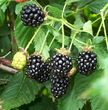
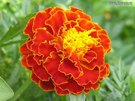
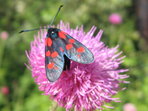
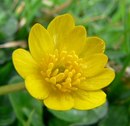
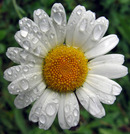
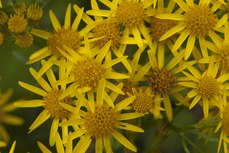
MCA RULES-
Please do not pressure Skywish, give her time okay? You will need to make a thing on why you think you should be MCA, don't be selfish please. You MUST be active to be considered for this job. Past MC's have done scavenger hunts so be prepared for that. Remember if you pressure Skywish you could be kicked from the position. Remember to be a good sport. In your speech you must promise that if you aren't picked you won't quit!
Thank you & good luck!
~Skywish, Marigoldstar, and Birchfall.
Please do not pressure Skywish, give her time okay? You will need to make a thing on why you think you should be MCA, don't be selfish please. You MUST be active to be considered for this job. Past MC's have done scavenger hunts so be prepared for that. Remember if you pressure Skywish you could be kicked from the position. Remember to be a good sport. In your speech you must promise that if you aren't picked you won't quit!
Thank you & good luck!
~Skywish, Marigoldstar, and Birchfall.
Please Sign Guestbook
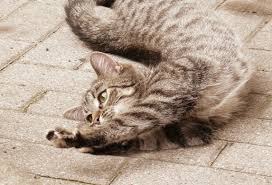
Skywish
Medicine cat of valeclan